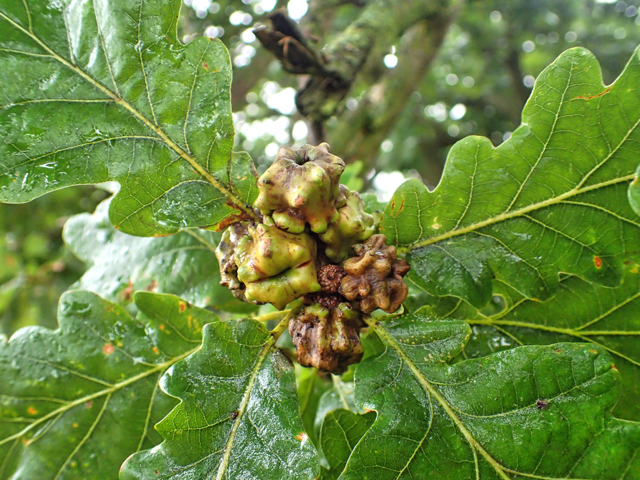Almost three hundred species of insect are associated with the oak tree. And that doesn’t include over 400 species of mites. One of these is a tiny wasp, Andricus quercuscalicis, which lays its eggs in the Spring in the buds of our native oak tree. This results in a woody growth or gall being formed between the acorn and its cup. This gall resembles the knobbled German hat that was in fashion in the 17th century called a knoppe hence its name the knopper gall. The galls are just turning brown and hard and will soon drop in the Autumn gales to the woodland floor. In the Spring a tiny female wasp will emerge and fly off to find a different species of oak, the Turkey oak, where it will lay her eggs on the male catkins. These eggs will produce wasps of both sexes and it is their eggs that will be laid in the buds of the native oak to restart the cycle.
Turkey oaks are an 18th century reintroduction into Britain. They were in fact present before the last ice age. The Knopper gall wasp first made its appearance in the 1960s and is considered a threat to the fertility of our native oaks.

Leave a Reply